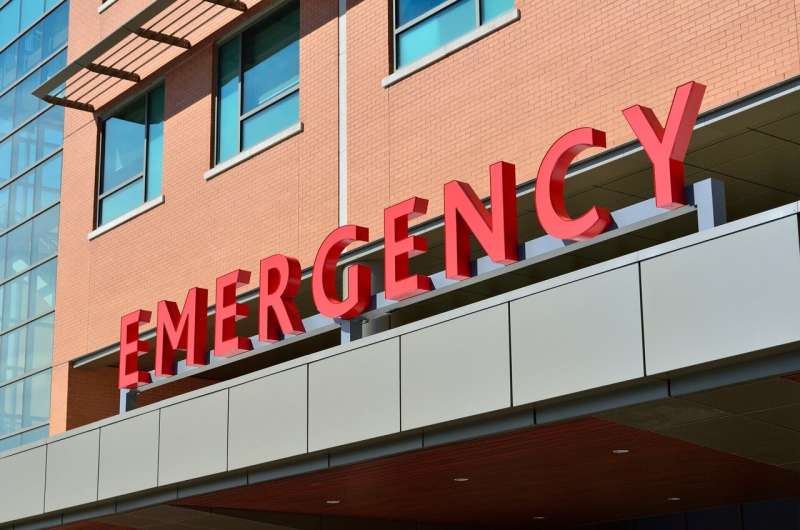This article has been reviewed according to Science X's editorial process and policies. Editors have highlighted the following attributes while ensuring the content's credibility:
fact-checked
peer-reviewed publication
trusted source
proofread
Price increases to blame for rising hospital emergency room costs

Price increases were the largest source of spending per visit in emergency rooms over the past decade in four of five states studied, according to a new report from researchers at Rice University and UTHealth Houston School of Public Health.
"Price increases versus upcoding as drivers of emergency department spending increases, 2012–19" was published today in Health Affairs. In the study, the authors analyzed more than 3 million emergency room visits and resulting insurance claims from the Blue Cross Blue Shield Association to better understand the growing costs of health care, particularly visits to the emergency room.
"Americans are feeling increasingly vulnerable to the rising costs of health care, particularly when it comes to ER visits," said Vivian Ho, the James A. Baker III Institute Chair in Health Economics, a professor in the Rice Department of Economics and the study's lead author. "However, it has been difficult to analyze the underlying reasons for these rising costs."
Ho said that health care facilities defend rising costs, arguing that ER patients have more complex and severe illnesses and injuries. Insurers counter that hospitals are engaging in upcoding, which occurs when a provider or facility submits billing codes for more severe and expensive diagnoses or procedures than those actually observed in, or provided to the patient. Meanwhile, other research suggests that most increases in health care spending are due to price increases in health care services and drugs.
The researchers found that price increases accounted for 51%, 70%, 57% and 79% of ER spending for Colorado, North Carolina, Ohio and Texas, respectively. In contrast, upcoding represented 30%, 23%, 8% and 16% of these states' increases in spending per visit.
In Massachusetts, price increases accounted for just 26% of the increase in average spending per visit, while upcoding accounted for 49%. However, spending per ER visit only rose $228 in Massachusetts between 2012 and 2019, whereas average spending increases for the other states ranged from $703 to $976. Massachusetts' Health Policy Commission conducts detailed cost benchmarking, which may have restrained price growth.
"We suspected upcoding and price increases were both important sources of rising costs for patients, but we were surprised by how much more dramatically price increases explained cost growth," said co-author Heidi Russell, a professor of management, policy and community health from UTHealth Houston School of Public Health.
"Other research suggests that health system consolidation has increased hospitals' negotiating power with insurers, which may explain these significant price rises," Ho said. "Next, we need to identify which provider types are most closely related to the largest price increases and upcoding. Knowing which of these are responsible for cost increases and why is crucial for formulating strategies for payers and policymakers to restrain spending growth."
More information: Vivian Ho et al, Price Increases Versus Upcoding As Drivers Of Emergency Department Spending Increases, 2012–19, Health Affairs (2023). DOI: 10.1377/hlthaff.2022.01287





















